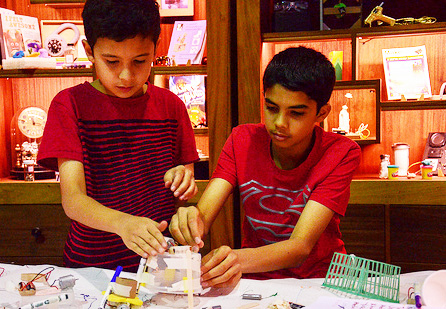In step with the popularity and growing momentum of Maker Faire, the "maker movement" is going global with the help of the Exploratorium museum's Global Studios.
After 40 plus years of work in this field, the Exploratorium, which is based in San Francisco, is stepping up its involvement in hands-on, informal science and technology education by working with groups across the world to spread and grow the movement. In addition to participating in all the Maker Faire events, bringing mini Tinkering Studios™ where visitors can experiment with the activities freely, the museum has also been called on to teach these ideas in far-reaching spots like Saudi Arabia and Italy.
“Tinkering is not something we invented or anyone invented,” said Luigi Anzivino, scientific content developer for the Tinkering Studio in the museum. “I think it’s a fundamental way that human beings have of being in the world. There’s nothing that we’ve discovered about this. So, it belongs to everyone. All we are trying to do is reveal that and allow people to let that come to the surface."
The group's goal is to leave a lasting impression on the sites they visit -- what they call a tinkering disposition. “A tinkering disposition is something that tells you that the world is knowable; you can find out something about the world by yourself and you don’t have to be an expert in any one discipline to start," Anzivino said. "You can just begin by doing something and then it’s a practice.”
Giving a child the chance to illustrate what she knows in three dimensions connects the abstract concept to its real-life application. But, in the Tinkering Studio, Luigi and his staff don’t have to connect what a child makes to formal school learning. “The content is the thing that the kids are making, there’s no separation,” Anzivino said. “We know that they are becoming more sophisticated in their thinking because the things that they're making become more sophisticated and complex.”


